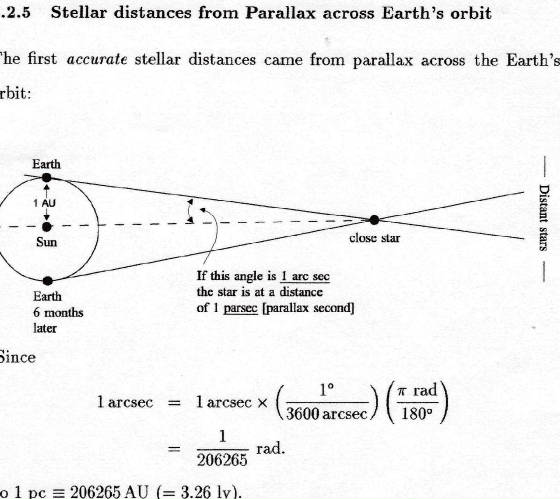|
In astronomy, such distances are usually in units of kilometers, but by changing
the prefix from kilo-, one may multiply distances by thousands. The same goes for parsecs, which is the metric unit
as well. Below explains the concept of parallactic seconds. In this case, galaxies are usually megaparsecs away.
Our Milky Way has a diameter around 30 kpc. Alpha centauri is about 1.3 pc away. Vega, my favorite star
is 8 pc away. Its companion appears 40 seconds of arc away, so the distance between them is 8 times 40 or 320 earth-sundistances.

|



